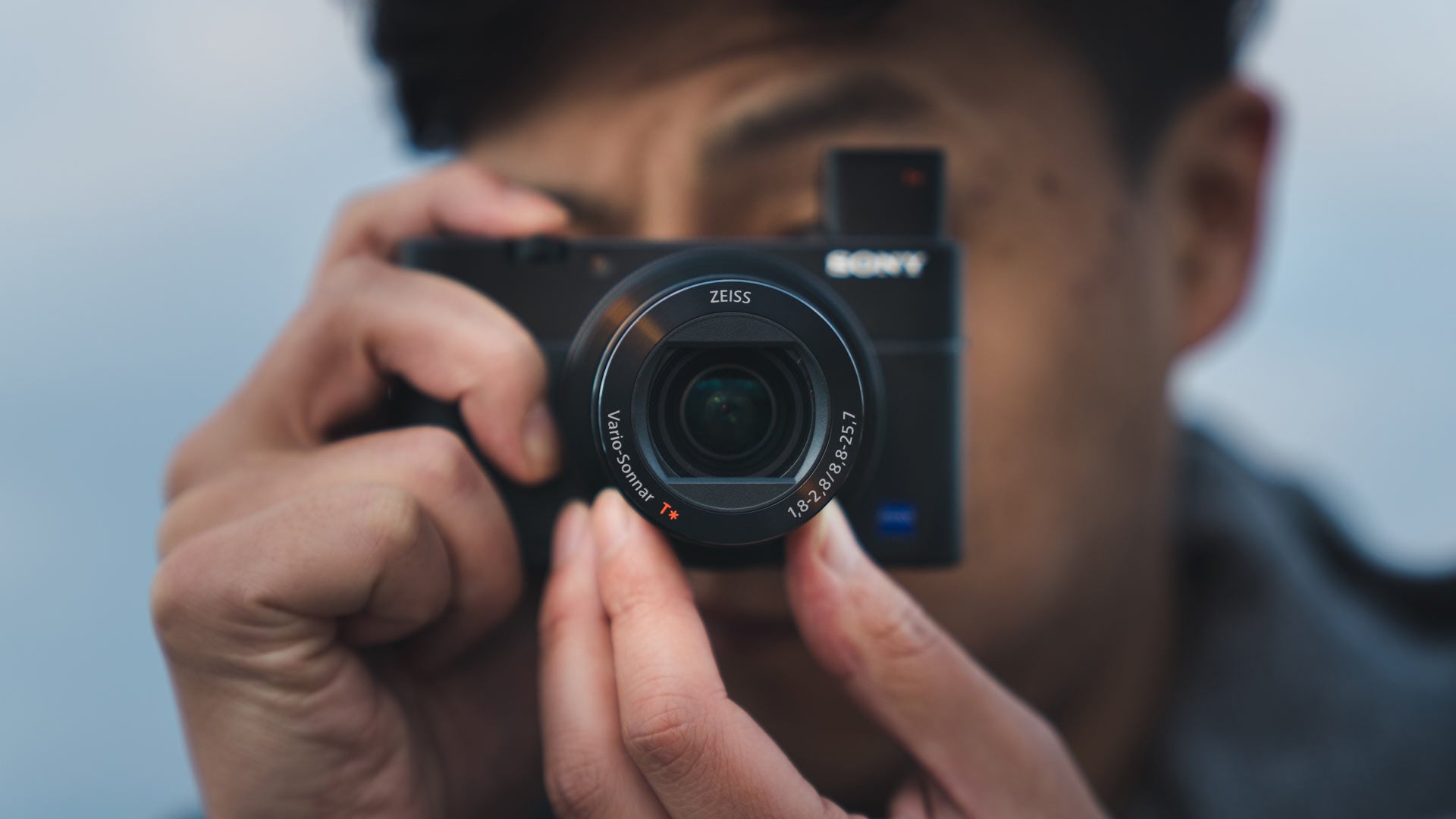They say that the best camera is the one you have on you. So - bring a better camera.
And while your proper camera is kinda heavy and inconvenient to carry around all the time, and your smartphone camera although light and convenient, is kinda crappy, what do you do?
You get the best, lightest, most convenient camera you can buy.
But wait, I can hear you whining and moaning about what I just said about smartphone cameras, so let’s just get that out of the way first.
Yes, smartphone cameras are still kinda crappy.
Sure, they might look decent in perfect lighting conditions, but unless you’ve got the editing skills of a modern wizard or lucked out with the right moment, a dedicated device like this will provide a safety buffer and give you the latitude to ensure you get a great shot more often than not compared to a smartphone. You’re kinda playing roulette with smartphone shots. Sometimes they’re good, sometimes they’re bad. Depending on your level of photographic ‘seriousness’, if it’s anything higher than a hobbyist, you’ve got to make sure that the moments worth pulling out your camera (smartphone or otherwise) for are able to be captured in a way you’ve visualised.
Okay, and now that’s out of the way - the camera.
I’ve been playing with this little compact camera since last year, so this review has been a long time coming.
The RX100V has has been a staple of my everyday carry since I bought it. It has a 24-70mm (FF equivalent) range and a very decent 20.1MP sensor. The autofocus system in this camera is blazingly fast and dynamic - it’s much better than my A7RII, even - and best of all, it fits in my pocket*.
The compact RX100V
I put an asterisk next to ‘pocket’ because I wear skinny jeans a lot 😅, and it still fits in my front jean pockets even though it’s kind of uncomfortable. The back ones are fine, though.
But seriously, this camera is tiny. It definitely isn’t the smallest compact camera on the market, but it doesn’t have to be. It’s already smaller in diameter than a smartphone, and although it’s thicker, it’s no less of a hinderance than bringing a wallet around.

Image quality
It’s great. It really is. I’m actually dumbfounded by how good the image quality is. Compared to any smartphone or any other compact on the market, it just simply wipes the floor - no contest.
In good lighting conditions, I’d say you’d be pretty hard-pressed to tell the difference between an image from this and one from an A6000 series camera.
The RAW files produced by this camera have a surprising amount of information in them too. It’s no secret that I’m pretty heavy with my edits, it’s my style. I found I was able to really push these files very very far before being uncomfortable, and for those times that I was, it was my own fault for not shooting at the correct exposure.
Autofocus and speed
Part of the great image quality comes courtesy of the new 1-inch Exmor RS CMOS sensor and BIONZ X engine with an upgraded LSI.
In normal people speak, it means that Sony has created a sensor that is able to achieve lightning fast autofocus speeds of just 0.05 seconds with 315 AF points that cover most of the sensor. In the real world, it means that you’re able to track your subjects over the majority of the frame, instantly.
This new sensor also allows you to shoot stills at speeds of 24 frames per second. If you didn’t know, most movies playback at 24 frames per second. This little powerhouse does that… while shooting in 20.1MP RAW. Insane.

Range
The other key to the great image quality this camera produces is thanks to its lens. Sony has once again graced this RX100 with a Zeiss lens sporting a 24-70mm focal range equivalent with available apertures of f1.8 @ 24mm, and f2.8 @ 70mm. 24-70mm is the workhorse focal range for most photographers, and it’s every bit as useful here as it is anywhere else in the dedicated camera world - something you just can’t compare with against a smartphone.
The Zeiss lens is sharp, and you’re able to control the speed of zoom in the menus - really useful. One minor hinderance here is that the RX100V has lots of customisation options, so I want to customise the buttons and dials to mirror my A7RII as much as possible so I don’t have to context switch so much. Unfortunately you’re not able to reprogram the zoom dial to control the aperture, although you’re able to reprogram the lens dial to the zoom function.
EVF
One really powerful and unique feature on this camera is the pop-up electronic viewfinder. Unlike most compact cameras, the RX100V features a small toggle on the left side of the unit, and activating it pops up a two-action, 2.4 million dot viewfinder that is bright and fast.
It’s two-actioned, meaning that once the EVF pops up, you need to pull out the diopter piece for it to achieve focus. This dual action is a minor annoyance - your expectation is for it to work straight away once it pops. It’s not a deal breaker though, and the fact there’s an EVF on this compact at all is a feat of engineering in itself.

Video and flippy screen
Even though I don’t shoot much video, it’s worth pointing out here - the RX100V is a very very capable video camera.
It shoots 4K at 25fps at 100M, which is pretty insane for a compact. Not only that, it can shoot up to 100fps in 1080p at 100M for slow motion shots, and if you really want to get slow, it has a HFR (high frame rate) mode capable of shooting short clips at up to 960 frames per second. I don’t even get this kind of slow-mo ability on my A7RII!
On the editing side, this camera also comes with S-Log2 so you can make the most of your post-processing grades.
Also, vloggers will love this camera, as it has a screen that flips upwards for selfie mode, and in combination with the amazing autofocus, face detection and small overall size, this camera is definitely a strong candidate as a main vlogging device.
Other great things worth mentioning
It comes with a bunch of other hardware features, too. Things like a pop-up flash, the ability to charge on the go via USB, a snappy monitor that feels like it’s displaying in 60fps or more, an integrated 3-stop ND filter(!), and electronic and silent shutters.
On the software side, it packs all the latest Sony tech like Eye AF (seriously rad), face detection, focus peaking and a bunch of other good stuff.
But... there’s things I’d love to see
Of course, there’s no such thing as the perfect device.
There are a couple of things I’d love to see on the RX100V, things I’ve covered already. Things like more button/dial customisation so that I can replicate the controls to something similar to how I control my a7RII. Things like a single-action EVF - just the one flick of the switch and the EVF is ready to go, instead of having to pull out the eyepiece to make the diopter work properly.
I’d also love to have a dedicated focus mode switch so I can change from AF-S to AF-C quickly. The autofocus is so useful in this camera and I use it 95% of the time.
Of course none of these things are deal breakers by any means.
Verdict
I use the RX100V as my secondary camera. With a super useful focal range of 24-70mm, great image quality and a small form factor, I can rely on it when my A7RII doesn’t have the right lens on and I need a quick shot, or if I’m doing long exposures and want a second shooter.
It’s also amazing for occasions where a bigger camera isn’t so practical. It fits great in a suit pocket, in any bag, and it’s the perfect level of discretion for street photography.
While there are things I’d love to see in future versions, the RX100V is probably the best compact camera on the market today. I wouldn’t hesitate recommending this camera to anyone, from an absolutely beginner, to hobbyist, all the way to pro. This camera is for everyone.
And of course, gallery!








 Buy the RX100V from Amazon
Buy the RX100V from Amazon



